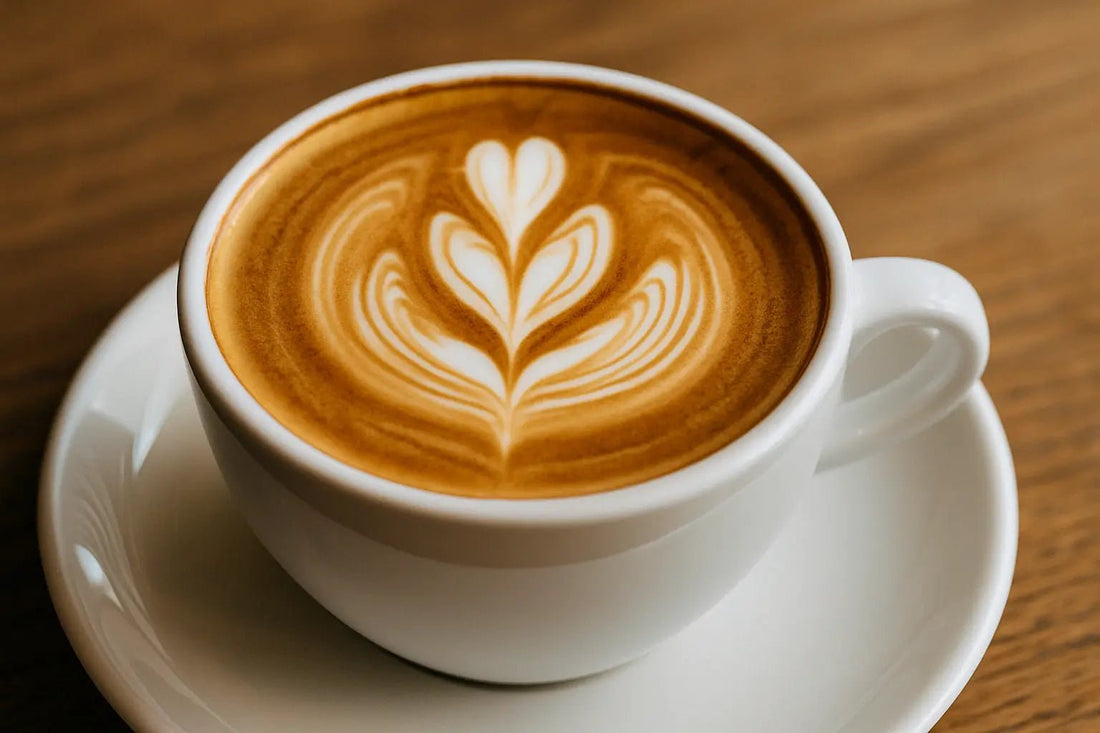What is a Flat White? ☕
🕒 Estimated read time: 3 minutes
Ever ordered a flat white and secretly wondered what makes it different from a latte? Me too. This creamy, punchy little drink has confused more than a few people. Let’s clear it up.

🌏 Where Did the Flat White Come From?
There’s some friendly disagreement over whether it was born in Australia or New Zealand, but one thing’s clear: the flat white was designed for people who wanted the strength of an espresso, softened by milk, but without all the frothy fluff of a cappuccino.
It’s become a firm favourite in cafés across the UK, known for its balance of flavour and velvety texture.
🧾 What Actually Is a Flat White made of?
A flat white is made with a double shot of espresso and steamed milk with minimal foam. That’s it. No flavourings, no syrups — just a rich, creamy drink that delivers strong coffee flavour without being harsh.
The milk is steamed to a microfoam texture (think silky, not bubbly), and it’s poured in a way that blends it evenly through the espresso. The result? A stronger-tasting drink than a latte, but with a much smoother finish than an espresso on its own.

Flat white - a smaller drink than a latte, with less foam and a stronger espresso base.
🔍 What Makes a Flat White Different?
- Espresso shot – Always a double (aka a \"ristretto\" in some cafés for even more punch)
- Milk texture – Silky microfoam, not stiff foam
- Size – Usually 150–180ml, smaller than a latte
- Flavour – Stronger than a latte, smoother than straight espresso
☕ Flat White vs Latte vs Cappuccino
| Drink | Espresso | Milk Style | Foam | Typical Size |
|---|---|---|---|---|
| Flat White | Double | Steamed (silky) | Very thin | 150–180 ml |
| Latte | Single/Dbl | Steamed | 1cm foam | 237–355 ml |
| Cappuccino | Single/Dbl | Steamed | Thick foam | 177–237 ml |

Flat white vs cappuccino — Flat white has less foam, no topping, more espresso flavour.
🏠 Can You Make One at Home?
- A solid double shot base (18–20g ground coffee)
- Milk frothed to microfoam (not bubbles!)
- Pour slowly to blend, not sit on top
☕ Brewing Tip
Aim for milk steamed to around 60–65°C — any hotter and you'll lose the sweetness. For a flat white, use around 100ml of milk to 36g of espresso for the perfect balance of strength and texture.

Slowly pouring the jug keeps milk and espresso separate until the last second, helping you control texture and balance at home.
🚀 Brew Like You Mean It
Flat whites are all about balance — bold coffee with creamy texture. The better the bean, the better the brew. Try one with our Brazilian Eagle for bold espresso flavour, or use our Fronteira Blend for a smoother, more forgiving finish.
chocolate, caramel, toasted nut and red berries

💬 Over to You
How do you make yours? Tell us your go-to flat white ratio or favourite milk to use at home.
📚 More from the Blog
❓ Frequently Asked Questions
Is a flat white stronger than a latte?
Yes. A flat white uses a double espresso and less milk, so the coffee flavour is stronger than in a latte.
Can I make a flat white without an espresso machine?
You can get close using a Moka pot and milk frother — just make sure the milk is microfoamed, not bubbly.



